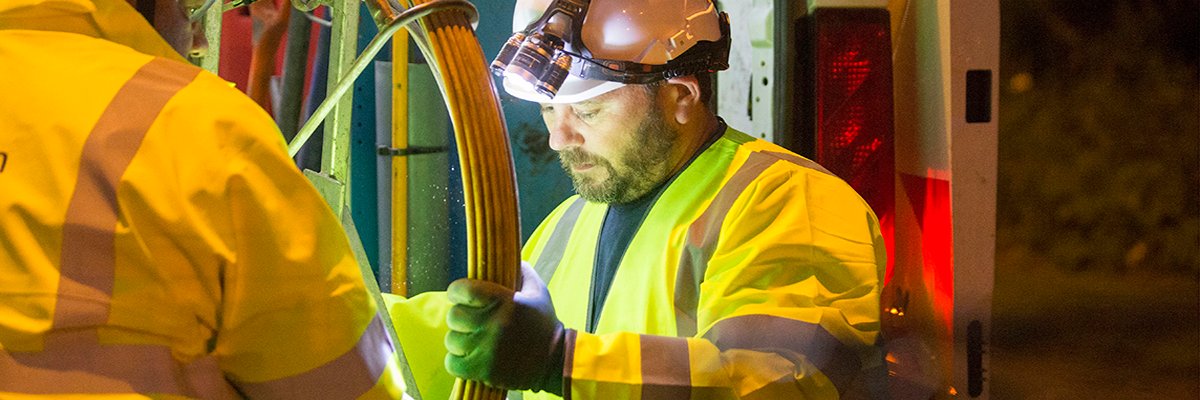BT Group has revised its timetable for moving all customers off the Public Switched Telephone Network (PSTN) from the end of 2025 to 2027.
The new deadline follows the introduction of a series of improvements to the programme to better protect vulnerable customers and those with additional needs, including telecare users. BT said its revised approach will result in a single switch for the majority of customers – both businesses and consumers, from copper to fibre – with all customers now expected to have moved off the old analogue PSTN by the end of January 2027.
At the heart of the programme is the belief that legacy network skills and parts are increasingly difficult to come by, and that new digital services such as Voice over IP (VoIP), video conferencing and other business applications have become more popular and effective for people communicating with one another.
To realise its plan on a national basis, BT is in the process of transitioning more than 14 million traditional lines across the UK onto digital services. Following the decision to shut down the PSTN, it was agreed to test processes for migrating customers to fibre services, and ultimately withdraw legacy copper services and the wholesale line rental products that rely on them.
BT’s broadband provision division, Openreach, regards the shift from copper to fibre networks as every bit as significant as the move from analogue to digital and black and white TV to colour. Openreach first announced in 2019 that the PSTN will have reached the end of its life by 2025, and that new digital services will be in use by then.
By eventually retiring analogue phone lines, it said it will create a simplified network that allows it to meet the enhanced needs of an increasingly digital society. As part of the programme, Openreach said it was in the process of upgrading just under nine million remaining analogue lines, including the now ageing traditional landline telephone service, to new digital ones.
In practical terms, Openreach has been implementing what it calls a Stop Sell process that is triggered when a majority (75%) of premises connected to a particular exchange can get a full-fibre connection. Customers who then want to switch, upgrade or re-grade their broadband or phone service will have to take a new digital service over Openreach’s full-fibre network. The business is giving communications providers such as BT, Sky, TalkTalk and Vodafone, which all use its network, a year’s notice that it will no longer be selling legacy analogue products and services in these circumstances.
Stop Sell rules
Openreach calculates that by summer 2024, the Stop Sell rules will have been activated in more than 700 exchanges. This would mean around six million premises, where full fibre is available to three-quarters of businesses and homes, and so new copper products could not be sold. In addition, BT Group’s Consumer division has restarted switching zero-use landline customers who have a broadband connection to its Digital Voice landline service.
Yet as the programme has been carried out, Openreach has had to alert service users that if they have anything connected to a phone line, such as a care or security alarm, they will need to check with the equipment supplier whether their devices could work over the new fibre network. There have also been fears that older telephones – currently powered by local telephone exchanges – could be cut off from the new network if there is a power cut. In this scenario, Openreach said users may have to “do something different” to make home phone calls.
To this end, the pushback of the switch-off follows what BT described as an industry-wide pause, and the introduction of the UK government’s Charter to protect vulnerable customers – especially telecare users – while making the switch from analogue to digital landlines.
Going forward, BT said its Consumer customers – except landline-only customers, those who use telecare or who have additional needs – will be contacted and offered the chance to switch to a digital landline provided over full-fibre broadband, where available. BT’s Business division is urging all of its customers to engage early and to partner with the company ahead of making the switch, especially where there may be a requirement to test existing or upgrade to new equipment to ensure compatibility with a digital line.
From this summer, BT Consumer will look to ramp up non-voluntary migrations for customers who do not identify as vulnerable or have additional needs, in areas where data sharing agreements have been signed with the local authority or telecare provider. For those who did not have broadband – which includes business customers with specialist connectivity requirements, including some alarms, lift and emergency lines, ATMs and payment terminals – BT assured that it was working on an interim, dedicated landline service designed to keep these customers connected while moving them off the analogue PSTN.
In addition, new equipment will be installed in local telephone exchanges that will allow consumer and business customers who do not have broadband to use their landline in the same way as they do today until a digital offering becomes available, or 2030 if that comes sooner. Trials have already begun with a nationwide roll-out for eligible customers expected this autumn.
BT Business is urging all of its business and public sector customers to register their interest to test what it calls this temporary “pre-digital phone line” product, so it can work with them to understand specific business use cases. BT’s Business team is also working with Critical National Infrastructure customers in sectors such as energy, water, transport, health and national security to guide them away from the PSTN.
“The urgency for switching customers onto digital services grows by the day because the 40-year-old analogue landline technology is increasingly fragile,” said BT Group chief security and networks officer Howard Watson. “Managing customer migrations from analogue to digital as quickly and smoothly as possible, while making the necessary provisions for those customers with additional needs, including telecare users, is critically important.
“Our priority remains doing this safely, and the work we’re doing with our peers, local authorities, telecare providers and key government organisations is key,” he added. “But more needs to be done, and we need all local authorities and telecare providers to share with us the phone lines where they know there’s a telecare user.”


